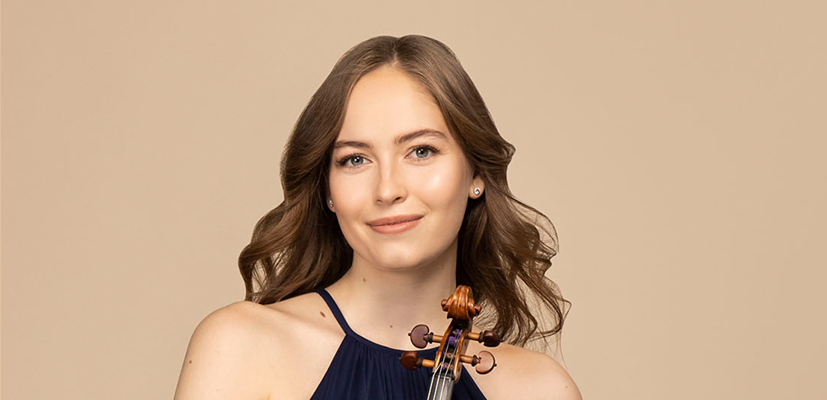
FRONT LINES OF MUSIC, AND TCHAIKOVSKY TOO
ROHNERT PARK, CA—-A petite figure from New Zealand brought down the house at the Santa Rosa Symphony, playing the Tchaikovsky Violin Concerto with an irresistible engaging spirit.
Disavowing the powerhouse approach to this concerto, Geneva Lewis set out spinning themes in soft, poetic terms. Her silky play grew in momentum and force through the imposing first movement, ever more climactic, in her congenial collaboration with the orchestra and conductor Francesco Lecce-Chong.
In a rare show of enthusiasm prior to the Canzonetta 2nd movement, she was accorded a standing ovation by a throng in Weill Hall March 23, evoking deep bows from the artist.
Playing a timeless Cremona violin built before the US ever came into existence, she carried gallantly through the ruminative, meditative slow movement, again rising to nimble triumph in the rapid passage work of the finale inspired by familiar old-Russian themes.
Her articulate, sensitive play, closely attuned to Lecce-Chung’s beat, produced the night’s highlight. She added a fast-flying solo encore by Bach (Partita No. 3 in E Major) , which again enkindled her fans.
Not far behind in eloquence was the brief, introspective “People Get Faces” work for string orchestra by Hildur Gudnadottir. Her opus led by a string trio and the low, deep, ruminative sounds of the contrabasses brought on a mystic mood of a barren landscape, perhaps inspired by Gudnadottir’s ice-swept homeland of Iceland.
Her work called for the trio to be placed literally out in left field, adding to the sense of remoteness in the scene.
The new work on the program, Michael Djupstrom’s “Dreams of Flight” showed off his programmatic inclinations in what nominally has been a commissioning program of First Symphonies by promising younger composers. To these ears, the middle movement with the extensive flute solo (Kathleen Lane Reynolds) was the most appealing. This leads eventually to a clarinet solo and emergence of a resurgent brass section with jittery figures, ever faster and more energetic, leading after 25 minutes to the finale. Though best-known as a pianist-composer, the 43-year-oldcreative artist comprehends nuances of orchestration and its grand gestures.
But lacking a clear-cut forward propulsion, his music, however eloquent, would best focus on accompaniment to film scores rather than emulating less compatible symphonic models. Just my opinion.
The concert ended with Ravel’s flamboyant century-old “Bolero.” In a first-person comment I heard once from one of his French musicians Paul Paray, when conducting the work, composer Ravel told his snare-drum player, “You and I control this work. Our beat throughout must be absolutely unvarying.” That glorified the back-row percussionist while also establishing Ravel’s raison d’etre concept: A super crescendo piece for orchestra, yet without acceleration.
MUSIC NOTES—In an on-stage announcement, music director Lecce-Chong voiced his enthusiasm for the four-year “First Symphony Project” commissionings now complete in Santa Rosa’s exemplary orchestral commitment to the music of today, bringing to the fore a group of emerging composers on the American scene….How can one resist the seductions of Weill Hall, especially sitting in the central balcony with its articulate acoustics?
Prior to Djupstrom, the First Symphony Project commissioned composers had featured Matthew Brown, Gabriella Smith and Angélica Negrón. In future projects, the SRS has commissioned a new work by Conrad Tao, Flung Out for Piano and Orchestra. The SRS has also commissioned more new music for next season by Katherine Balch and Jonathon Leshnoff.
SANTA ROSA SYMPHONY, at Weill Hall, Santa Rosa State Univ., Rohnert Park, CA, through March 25. For info: (707) 546-8742, or go online, www.srsymphony.org.